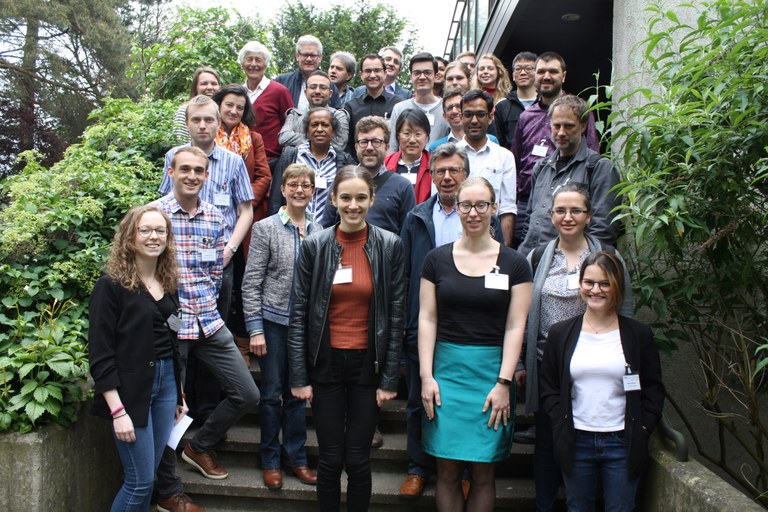
Participants of the 2019 Springmeeting at Campus Groenenborger in Antwerp
Friday May 15th, 2020, the Dutch-Flemish Scientific Computing Society is organizing its annual spring meeting, together with the Technical University in Delft the Netherlands. A mix of young and senior researchers will be selected to present their research.
This year, participation including lunch will be free. Register here.
No shows will be charged with 25 euros administration costs.
Location:
Kubus
TU Delft, Gebouw 26 (Zaal Kubus, A.0.350)
Van der Burghweg 1
2628 CS Delft
Directions public transport:
De Bouwcampus can be reached from Delft Central Station by bus 69,40 and 174. Bus stops close to De Bouwcampus are TU- Sport en Cultuur and TNO Zuidpolder.
From Delft-Zuid station you can walk to De Bouwcampus in about 20 minutes.
Directions by car and parking
Coming from the A13 take exit 10 Delft Zuid and follow the signs TU Delft. Go right in to the Schoemakerstraat and at the first crossing go left. If you then turn left again you are on a free parking spot named “Sports”, there are 300 spots there. It is a 5 minute walk from this parking to Van der Burghweg 1.
In the direct area of the University there is limited parking space available, you risk a fine if you are not parked in the designated field.
Program 2020
09:00-09:30 Registration, coffee and tea
09:30-10:10 Kristof Cools (TU Delft)
Low Frequency and Dense Grid Stable Boundary Element Methods for Scattering by Non-Perfectly
Conducting Obstacles
10:10-10:35 Harshit Bansal (TU Eindhoven)
Model order reduction for problems with moving discontinuous features
10:35-11:00 Kelbij Star (SCK*CEN)
A reduced order model of turbulent buoyant flow of low-Prandtl number fluids
11:00-11:30 Coffee and tea
11:30-11:55 Yuan Hou (University of Antwerp)
Exponential analysis in Inverse Synthetic Aperture Radar (ISAR)
11:55-12:20 Lars Corbijn van Willemswaard (University of Twente)
A Discontinuous Galerkin discretization for the periodic Maxwell eigenvalue problem
12:20-12:30 Group picture
12:30-13:30 Lunch
13:30-13:55 Jeremias Garay (University of Groningen)
Determining the quality of 4D flow MRI
13:55-14:20 Marieke Kootte (TU Delft)
Solving the power flow problem on integrated networks
14:20-14:50 Coffe and tea
14:50-15:15 Koen Ruymbeek (KU Leuven)
Tensor-Krylov method for parametrized eigenvalue problems
15:15-15:50 Matthias Schlottbom (University of Twente)
On classical numerical methods for radiative transfer in a unified variational framework
15:50-16:00 Closure
Speakers Spring meeting SCS 2020
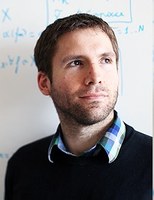 |
Kristof Cools: In 2018, Dr. Cools joined the Department of Industrial and Applied Mathematics at TU Delft. His research interests include the spectral properties of the boundary integral operators of electromagnetics, stable and accurate discretization schemes for frequency and time domain boundary element methods, domain decomposition techniques, and on the implementations of algorithms from computational physics for high-performance computing. |
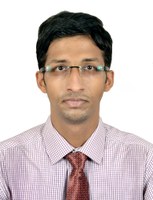 |
Harshit Bansal: pursued the dual-degree program in Mechanical Engineering at the Indian Institute of Technology, Kharagpur, India. He obtained Bachelor of Technology in Mechanical Engineering and Master of Technology in Mechanical Engineering with specialization in Mechanical Systems Design in 2016. After finishing his masters, he started his PhD in September 2016 (under the guidance of Prof. dr. Wil Schilders, Prof. dr. ir. Nathan van de Wouw and Dr. Laura Iapichino) in the Centre for Analysis, Scientific Computing and Applications (CASA) at the Department of Mathematics and Computer Science, Eindhoven University of Technology, The Netherlands. He is carrying out his PhD under the aegis of Shell-NWO/FOM Programme in Computational Sciences for Energy Research. The main focus of the project is to develop structure-preserving model order reduction techniques in the scope of drilling automation. His research interests include model order reduction of transport-dominated problems, port-Hamiltonian modelling, structure-preserving discretization and model order reduction of distributed parameter systems. |
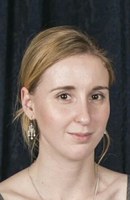 |
Kelbij Star studied Applied Physics at the Delft University of Technology. Her master was mainly focused on transport phenomena and fluid flow. After having worked in the industry for one year, she started a PhD at the University of Ghent under the supervision of professor Degroote in October 2017. The PhD is in collaboration with SCK·CEN, a nuclear research institution in Belgium. She joined the mathLab group of professor Rozza at SISSA in Italy for a research stay during the first half of her second year. Her PhD is about developing reduced order models for fluid dynamics problems.
|
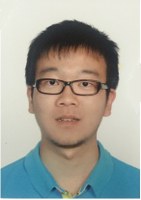 |
Yuan Hou: obtained his BSc and MSc degrees in Software Engineering from East China Normal University in Shanghai, China, in 2014 and 2017 respectively. Since October 2017, he is a PhD student in the Computational Mathematics (CMA) research group at the University of Antwerp in Belgium. His research focuses on using state‐of‐art multivariate exponential analysis techniques to tackle challenges in identified computational science and engineering applications.
|
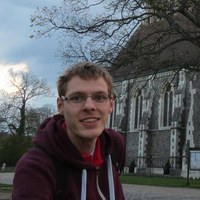 |
Lars Corbijn van Willenswaard: received his BSc in both Applied Mathematics and Applied Physics from the University of Twente in 2013. During his masters in Applied Mathematics at the same university he took 1,5 years to work full time as a software engineer at the company Cofano. After this interlude, he finished his Master degree cum laude in 2018 under the supervision of prof. Van der Vegt. Since then he is pursuing a PhD in the groups of prof. Van der Vegt and prof. Vos, both at the University of Twente, with his research focusing on efficient computational methods for nanophotonics. |
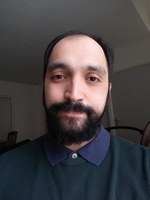 |
Jeremias Garay:
Studied Physics at the University of Chile and followed a master in the same university, focused in finite elements simulations for geophysical elasticity problems. Since 2018 he is working in his PhD at the University of Groningen under the supervision of professor Cristobal Bertoglio, developing inverse problems for fluids equations, applied to cardiac hemodynamics and MRI.
|
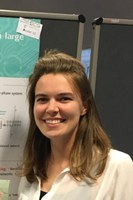 |
Marieke Kootte: received her B.Sc. degree in civil engineering in 2014 at Delft University of Technology, The Netherlands. She then obtained her double degree in applied mathematics at Delft University of Technology and KTH Stockholm, Sweden, in 2017.
Currently she is pursuing her Ph.D. degree at the Numerical Analysis research group of the Delft Institute of Applied Mathematics, Delft University of Technology. Her topic focuses mainly on fast and robust power flow solvers for integrated transmission-distribution networks and partly on defining optimal bid strategies for different electricity markets. |
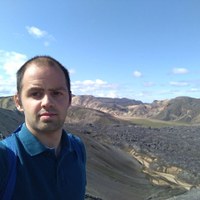 |
Koen Ruymbeek:
Koen Ruymbeek studied Financial Mathematics at UAntwerpen. After working in industry for half a year, he started a PhD at KU Leuven in March 2017 under supervision of professor Karl Meerbergen and professor Wim Michiels. My research is situated in numerical linear algebra and focus mainly on the calculation of eigenvalues of matrices when they depend on parameters. |
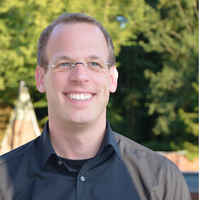 |
Matthias Schlottbom obtained a PhD in mathematics (Dr. rer. nat.) at the RWTH Aachen in 2011.
After that he was PostDoc at the technical universities in Munich and Darmstadt and at the WWU Münster.
Since 2016 he is an Assistant Professor in the Department of Applied Mathematics at the University of Twente.
His research focuses on the development and analysis of numerical methods for partial differential equations and inverse problems.
Areas of applications range from medical imaging and biology to photonic crystals. |
2020 Abstracts
|
Kristof Cools:
Low Frequency and Dense Grid Stable Boundary Element Methods for Scattering by Non-Perfectly Conducting Obstacles
For many scattering problems where an electromagnetic wave meets a penetrable target, the internal dynamics can be accurately modelled by enforcing an impedance boundary condition. Examples are the scattering by highly (but not perfectly) conducting objects, the transmission of waves through frequency selective surfaces, and the interaction of waves with layers of graphene. Classic impedance boundary conditions enforce a pointwise proportionality between the electric and magnetic field at the surface of the scatterer. The resulting method unfortunately suffers from numerical instabilities when the frequency tends to zero or when the mesh size is chosen very small. This problems limits our ability to model multi-scale problems. In this contribution, we introduce a novel impedance boundary condition. We will demonstrate that the resulting integral equation methods can be rendered stable in the multi-scale regime and solution times remain bounded.
|
|
Harshit Bansal:
Model order reduction for problems with moving discontinuous features*
Abstract:
The motivation of this work is to enable the use of multi-phase hydraulic models, such as the Drift Flux Model (DFM) [1], in developing automation strategies for real-time down-hole pressure management in drilling systems. The DFM is a system of multi-scale non-linear hyperbolic Partial Differential Equations (PDEs) and its response is dominated by wave propagation characteristics. The central aim of this work is to accurately capture wave-front propagation (and wave interaction) phenomena, induced by slow or fast transients, in a reduced-order modeling framework.
Moving discontinuities or shock-fronts are representative features of the models governed by hyperbolic PDEs. Such features pose a major hindrance to obtain effective reduced-order model representations [2]. This motivates us to investigate and propose efficient, advanced and automated approaches to obtain reduced models, while still guaranteeing the accurate approximation of wave propagation phenomena.
We propose a new model order reduction (MOR) approach to obtain effective reduction for transport-dominated problems or hyperbolic PDEs. The main ingredient is a novel decomposition of the solution into a function that tracks the evolving discontinuity and a residual part that is devoid of shock features. This decomposition ansatz is then combined with Proper Orthogonal Decomposition applied to the residual part only to develop an efficient reduced-order model representation for problems with multiple moving and possibly merging discontinuous features. Numerical case-studies show the potential of the approach in terms of computational accuracy compared with standard MOR techniques.
References:
[1] S. Evje and K. K. Fjelde. Hybrid Flux-Splitting Schemes for a Two-Phase Flow Model. Journal of Computational Physics, 175(2):674–701, 2002.
[2] M. Ohlberger and S. Rave, Reduced basis methods: Success, limitations and future challenges, Proceedings of the Conference Algoritmy, 2016.
* This is joint work with Stephan Rave (University of Muenster), Laura Iapichino (Eindhoven University of Technology), Wil Schilders (Eindhoven University of Technology) and Nathan van de Wouw (Eindhoven University of Technology and University of Minnesota).
|
|
Kelbij Star:
A reduced order model of turbulent buoyant flow of low-Prandtl number fluids
Abstract:
Heat transfer in molten salts and liquid metals, so-called low-Prandtl number fluids, is of interest of many industries, like nuclear and solar. Due to the high thermal diffusivity of these fluids, the influence of buoyancy on the turbulent flow characteristics and heat transfer is large. Therefore, low-Prandtl number fluid flows, and especially their turbulent heat fluxes, require additional or different modeling compared to air or water flows.
Reynolds averaged Navier-Stokes (RANS) simulation is computationally more efficient than the more detailed large eddy simulation and direct numerical simulation and is therefore preferred for this type of turbulent flows. Nevertheless, RANS simulation is often impractical when a large number of simulations need to be performed. This has motivated the development of reduced order models.
My latest work includes the development of a Finite-Volume based POD-Galerkin reduced order modeling strategy for buoyancy-aided turbulent flow. Steady-state simulations are performed of liquid sodium flow over a vertical backward-facing step with a uniform wall heat flux imposed on the wall directly downstream of the step. The reduced order model is tested for different values of the heat flux.
The velocity- and temperature fields predicted by the reduced order model are in good agreement with those computed by the RANS simulations, while the computational cost is reduced by a factor of the order O(105).
|
|
Yuan Hou:
Exponential analysis in Inverse Synthetic Aperture Radar (ISAR)
Abstract:
Inverse synthetic aperture radar (ISAR) imaging is a system consisting of a real‐aperture radar, emitting a sequence of high frequency bursts, tracking a moving target in the far field of the radar. When the target is hit by an electromagnetic wave, a limited number of locations on the object, such as edges and surface discontinuities, scatter the energy back toward the observation point. The locations of these concentrated sources of scattering energy are called scattering centers, each of which can be described by a multivariate complex exponential. ISAR plays an important role in target identification, commercial aircraft classification, military surveillance and the like. Based on the latest development in exponential analysis, we present a new method that can extract high resolution information from noisy ISAR data. In comparison to other methods, our method offers a range of advantages. The method neither suffers the curse of dimensionality nor requires a prior estimate on the number of scattering centers. It can work with sub‐Nyquist sampled data and offers a validation step, which is very useful in low SNR conditions. A favourable computation cost results from the fact that several independent smaller systems are solved instead of one large system incorporating all measurements simultaneously.
|
|
Lars Corbijn van Willemswaard
A Discontinuous Galerkin discretization for the periodic Maxwell eigenvalue problem
Abstract:
Photonic crystal are nanostructures where the optical properties periodically vary on same size as the wave length. These crystals can by careful design exhibit a bandgap, a range of frequency where light propagation is forbidden. By intentional deviation from such a design one can control the propagation of the light and slow it down or let it hop between points. The design of these crystals requires the prediction of these effects by numerical means, which requires solving a Maxwell eigenvalue problem on a periodic domain.
The sharp material interfaces in photonic crystals can lead to solutions with discontinuities in the solution across these interfaces. The Discontinuous Galerkin method can naturally handle such discontinuities and is therefore a suitable choice for such problem. In this talk we will present the latest progress on our Discontinous Galerkin solver for analysing the properties of photonic crystals.
|
|
Jeremias Garay
Determining the quality of 4D flow MRI
Abstract:
3D time resolved Phase-Contrast MRI or 4D flow is gaining space into clinical practice for measuring blood flow velocity in large vessels. Due to the long acquisition times, 4D flow is susceptible to several image artifacts due to noise and aliasing, respiration, large accelerations and turbulence. However, to the authors best knowledge, there is no mean to quantitatively and locally assess the quality of the data which may help in interpreting the quality of the results.The purpose of this work is to develop a metric to determine the quality of 4D flow MRI in view on how the measurements fulfill the Navier-Stokes equations.
|
|
Marieke Kootte
Solving the power flow problem on integrated networks
Abstract:
Power flow simulations form an essential tool for electricity network analysis but conventional power flow solvers are designed to work on a separated transmission or distribution networks only. The continuing growth of electricity consumption, demand side participation, and renewable resources makes the electricity networks co-dependent. Integrated models incorporate the coupling of the networks and interaction that they have on each other, representing the power flow within this changing environment accurately.
During this talk I will compare several numerical methods that are available to solve the power flow problem on integrated network models. I reviewed and assessed these methods by running simulations on small test networks and comparing the outcome on accuracy, computational time, and convergence.
|
|
Koen Ruymbeek:
Tensor-Krylov method for parametrized eigenvalue problems
Abstract:
In applications of linear algebra, there is a need to deal with uncertainty in the matrices. We focus on matrices that depend on a set of parameters. In this talk, we want to calculate a particular eigenvalue for a large set of parameter samples. As eigenvalues and corresponding eigenvectors of neighboring parameter values are close to each other, one can use the common information to speed up the computations. In this talk we extend Krylov methods to the case the matrices depend on parameters. We discuss the convergence of the method and give numerical examples where the matrices are taken from applications in time-delay systems and PDEs.
|
|
Matthias Schlottbom:
On classical numerical methods for radiative transfer in a unified variational framework.
Abstract:
High-frequency electromagnetic radiation is at the heart of several high-tech applications, including medical imaging, tumor treatment, gas and oil reservoir exploration, climate simulations, and in the energy efficient generation of white light. The extremely high complexity of the scattering media in terms of number, geometry and position of scattering objects does not allow to directly simulate Maxwell’s equations in such applications. Instead, the radiative transfer equation (RTE) has been established as a sound physical model by a rigorous derivation from Maxwell’s equations, and important physical observables, such as the electromagnetic energy, can be recovered from the solution of the RTE.
Due to the wide range of applications for the RTE, several techniques for its numerical solution have been developed, and many techniques that are nowadays well-established in various fields can originally be associated to the RTE, such as the Monte-Carlo method or discontinuous Galerkin methods. In this talk we review classical deterministic approximations of the RTE, including truncated spherical harmonics approximations and discrete ordinates methods, and give an interpretation in a unified variational framework. We also briefly discuss the efficient numerical solution by iterative methods.
|
PhDays 2020 postponed
Due to the current situation concerning COVID-19, we have made the decision to postpone the 2020 edition of the PhDays. We have made preemptive arrangements for September 11th through 13th, but this is, of course, subject to the situation at that time.
We have suspended new registrations until closer to the date, but you can already mark the new date in your calendar. We will send another update once registrations re-open.
***
We are happy to announce that the PhDays 2020, a special weekend for all PhD students in Scientific Computing from the Dutch and Flemish Universities, will take place again. This is a perfect chance for PhD students to combine the Spring Meeting of the SCS with the PhDays. This year it will take place in the weekend of May 15th -- 17th, in Reuver (Dutch Limburg).
More information about the PhDays can be found here website.
Organization
The spring meeting is organized yearly by the Dutch-Flemish Scientific Computing Society (SCS), this year in cooperation with Technical University Delft.
Organizing comittee: Prof.dr.ir. Kees Vuik (TUD, ) Martine Anholt (CWI, Secretary SCS).


Support for this meeting has been obtained from Centrum Wiskunde & Informatica (CWI) and Technical University Delft. The Scientific Computing Society is very grateful for that support.












